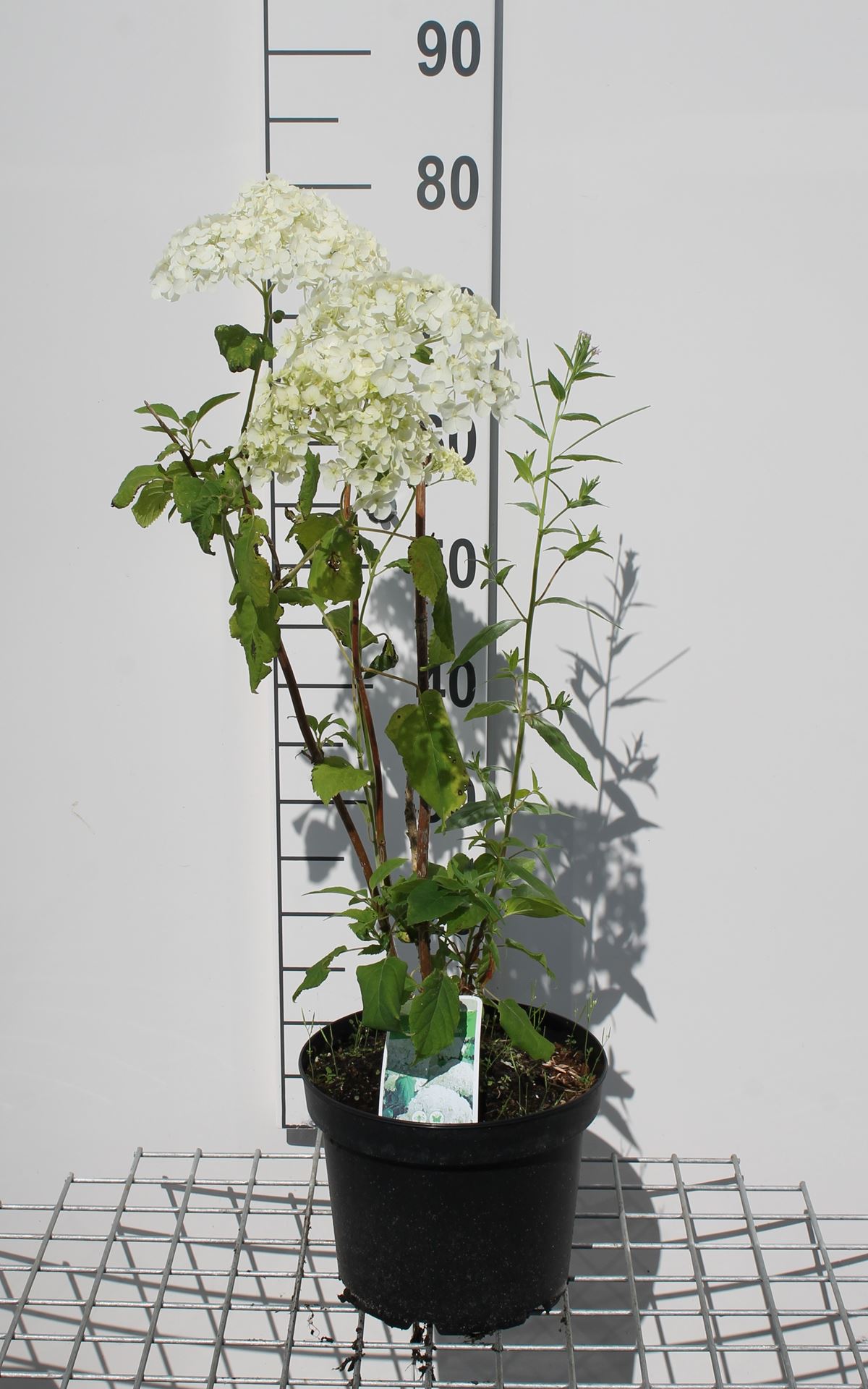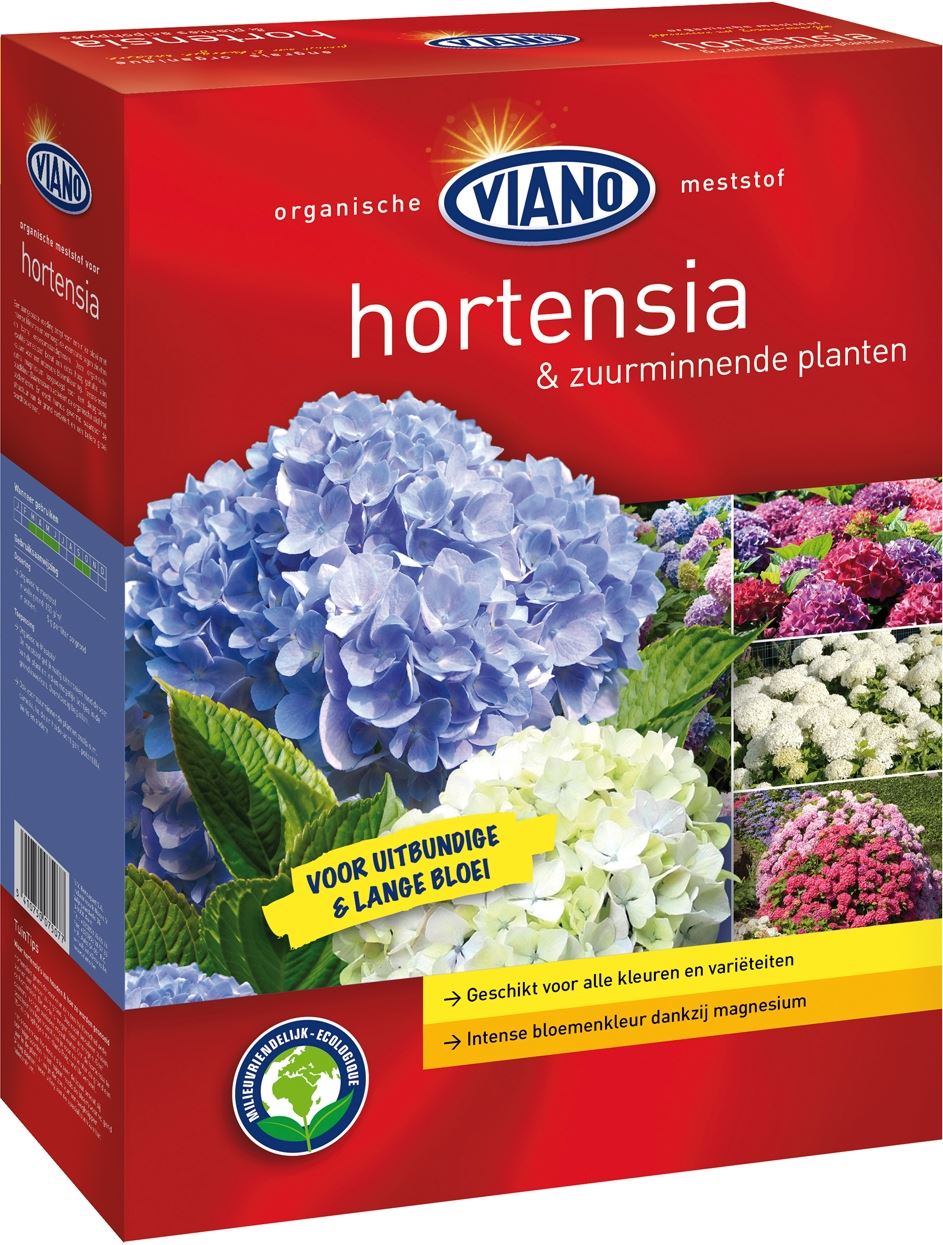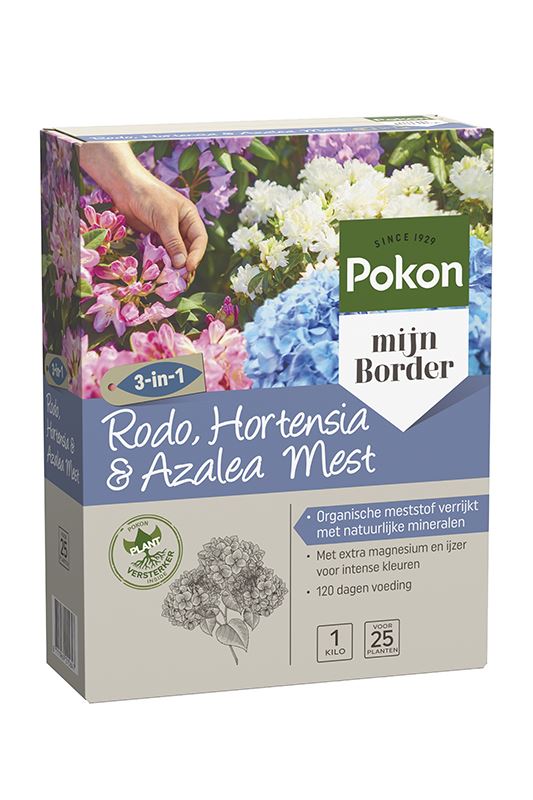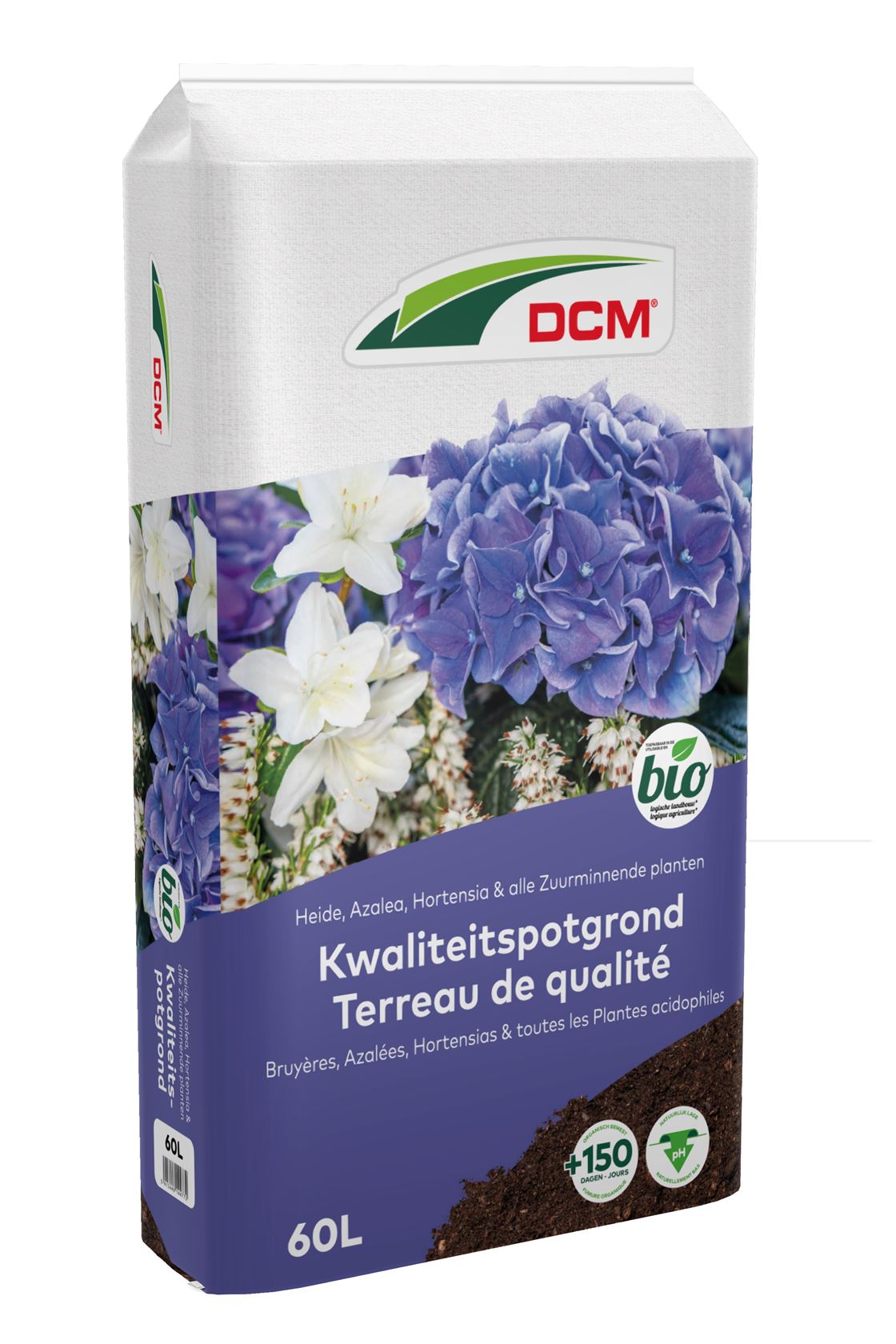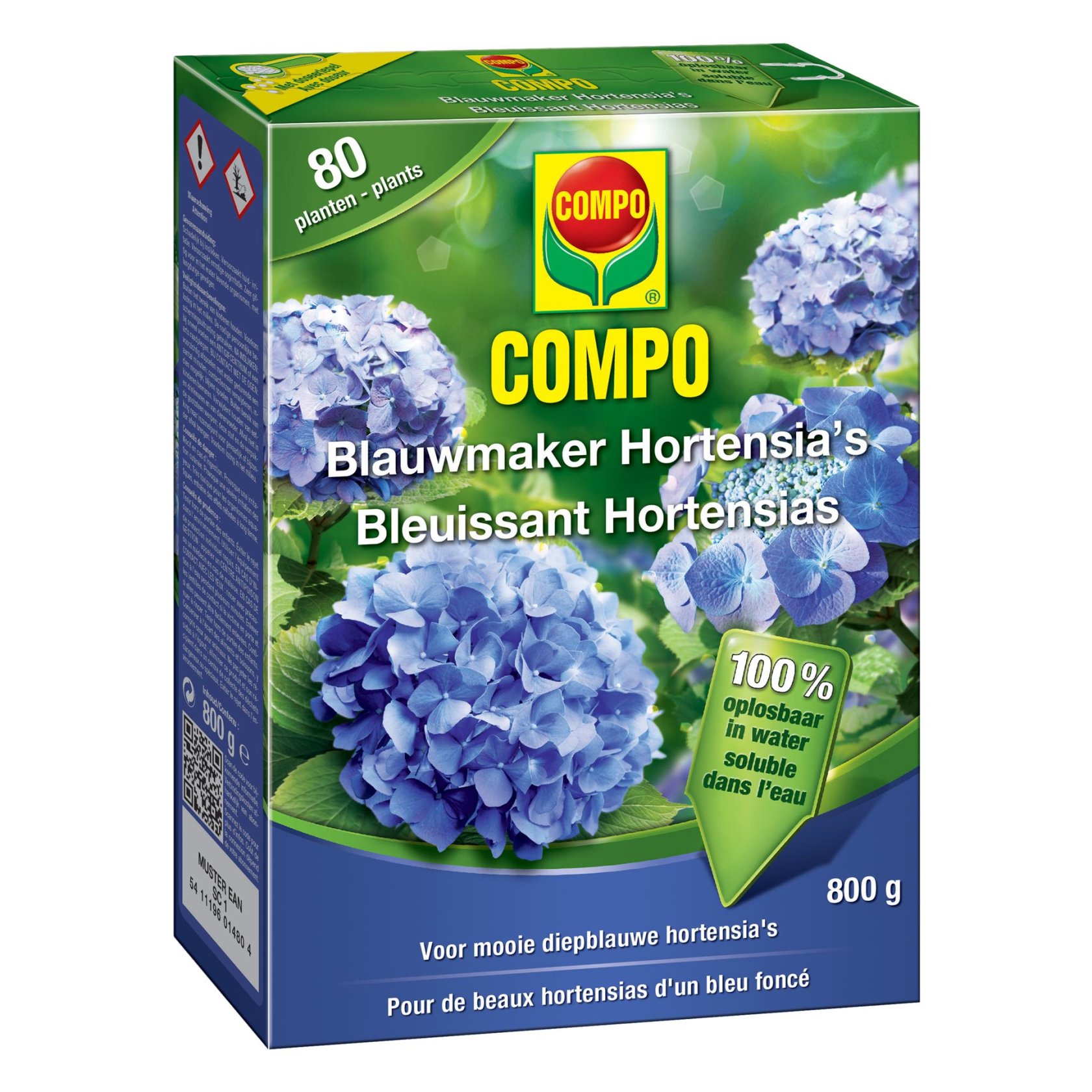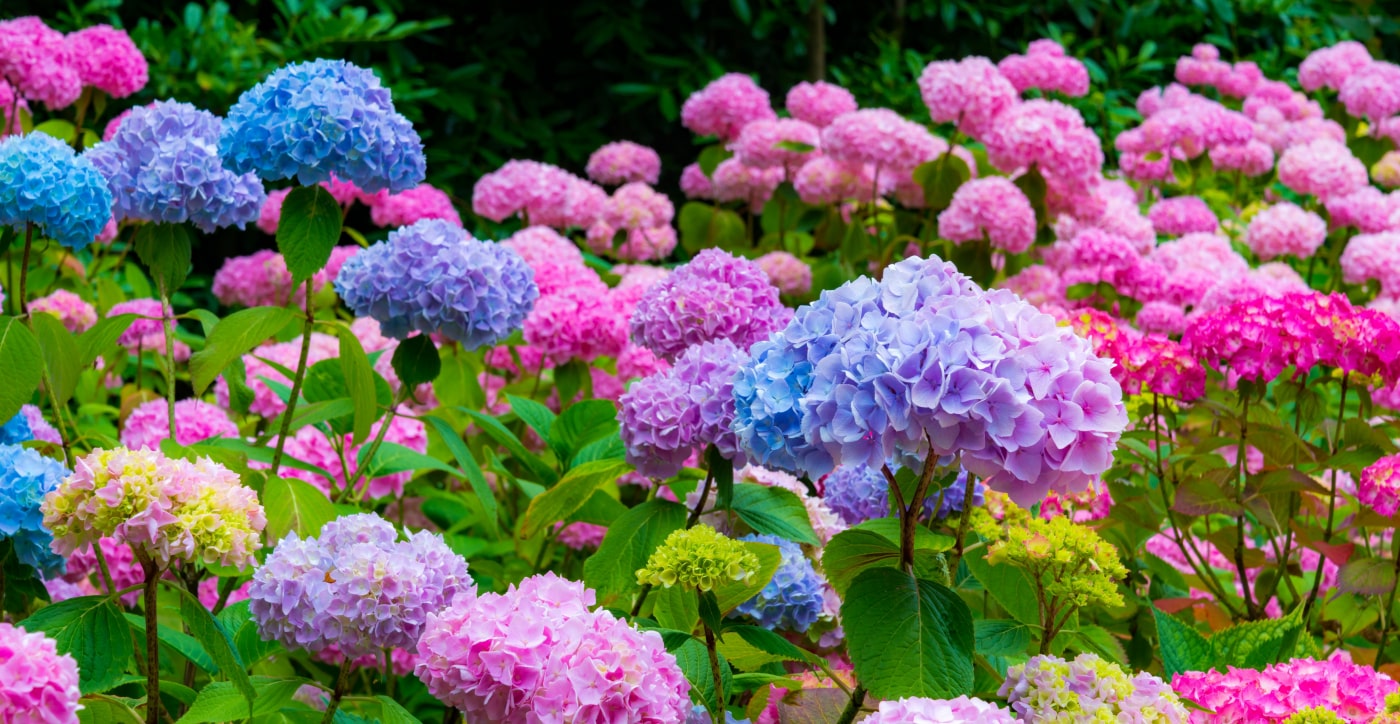
Hydrangeas, a floral delight in the garden
The hydrangea (Hydrangea) adorns many (city) gardens with its Hydrangea graces many (city) gardens with its lush and bulbous blooms. It does well both in full soil and in pots, so it is also the ideal bloomer for your balcony or (roof) terrace! With its many colours and shapes, every gardener will find a variety to his or her liking. From fluffy white snow globes (Hydrangea arb. Hills of snow or Hydrangea arb. Strong Annabelle) to bright explosions of colour.
Hydrangeas in all colours & shapes
In the first half of the year, the red, pink, purple, white, green and blue hydrangeas are the most popular ones. There are also hydrangeas with a multicoloured sea of flowers.
In the second half of the year, there are the so-called translucent flowers. These hydrangeas have a green, dark red or brown hue and dry well. These are flowers which the grower has allowed to develop further in the greenhouse.
Hydrangeas not only offer a lot of diversity in colour, but also in shape. You have the classic round shape (Hydrangea macrophylla) but also the rising panicle hydrangeas (Hydrangea paniculata) look elegant in the garden. And then you can also choose between
single- and double-flowered species.
Care tips
• When to plant?
The best period for planting hydrangeas is March-April, but you can actually plant them all year round, except when it is freezing or very hot and dry.
• Where to plant?
Hydrangea is not a sun worshipper, so semi-shade is the ideal planting location! However, it also does well in a more shady location. So it is ideal to plant them under a tree or shrub to create more depth in your garden. If you plant them under a tree, they will need more nutrition & water as the root system of the tree will take some of it away. Certain species, such as the Hydrangea macr. Annabelle, also do well in sunny conditions but require remarkably more water.
• Maintenance?
In February-March the Hydrangea should be pruned. You can prune it every spring to 15cm from the ground. Hydrangeas can stand a little (rain) water, so in spring and summer they should be watered at least twice a week. To keep the blue hydrangeas colourful, you can also give them some fertiliser containing alum. These are also known as bluemakers. Did you know that you can give pink hydrangeas a blue colour with this fertiliser?

Tip from Marcel
Plant the hydrangeas in March-April for a beautiful flowering season. This way the plants are already well rooted before the summer arrives.
Bouquet of plants from your own garden
Due to their lush blooms, it will not be noticeable if you snip off a few stems for a beautiful bouquet. Combine this special foliage with the snowberry, Bupleurum, Calla and Crocosmia berries. This creates a beautiful and nonchalant look. Time for colour in the interior! So that you can enjoy a beautiful bouquet even longer, we give you a few more handy tips:
- Choose a clean vase and fill it with tap water at room temperature.
- Add cut flower food to the water for a longer shelf life.
- Cut or trim the flower stems 3-5 cm diagonally with a sharp, clean knife or pruning shears.
- Make sure there are no leaves hanging in the water.
- Do not place hydrangeas in a draught, in full sunlight or near the heating.
- Refill the vase regularly with tap water, hydrangea flowers drink a lot because they have thin leaves and petals and therefore evaporate a lot of moisture.
- Do not place hydrangeas near a fruit bowl. Fruit gives off ethylene gas and the flowers age rapidly as a result.
Want to read more gardening tips?
More info? Receive all our gardening tips directly in your mailbox!
We'll only email you handy facts, green advice and our best promotions & discounts. You'll receive it about once a week and you can unsubscribe at any time. No spam, promise 🤞














